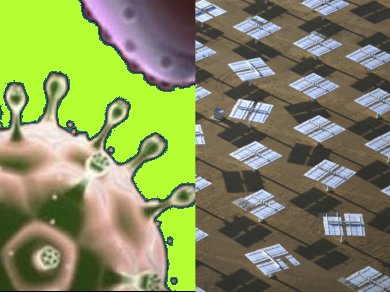In a solar cell, sunlight hits a light-harvesting material, causing it to release electrons and produce an electric current. Carbon nanotubes can enhance electron collection from a solar cell’s surface but they tend to aggregate, which reduces their efficiency.
Angela Belcher and colleagues, Massachusetts Institute of Technology, USA, have found that by using a genetically engineered version of the M13 virus, which usually infects bacteria, they can create a template for the self-assembly of carbon nanotube–TiO2 nanocomposites. The viruses reduce aggregation and improve the water-solubility of the nanotubes, making processing easier. The viruses can also be triggered to produce a TiO2 coating on the surface of the virus/nanotube complex. The coating gives better contact between the TiO2 nanoparticles and carbon nanotubes leading to improved transport of electrons.
With this approach, the power conversion efficiency of dye-sensitized solar cells was improved from 8 % to 10.6 %.
- Virus-templated self-assembled single-walled carbon nanotubes for highly efficient electron collection in photovoltaic devices
X. Dang, H. Yi, M.-H. Ham, J. Qi, D. S. Yun, R. Ladewski, M. S. Strano, P. T. Hammond, A. M. Belcher,
Nature Nanotechnol. 2011.
DOI: 10.1038/nnano.2011.50



